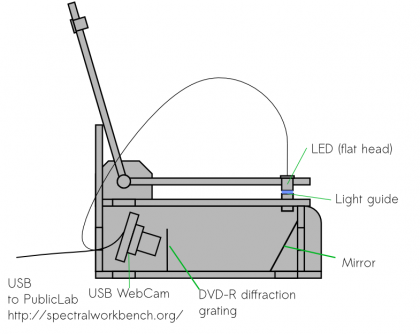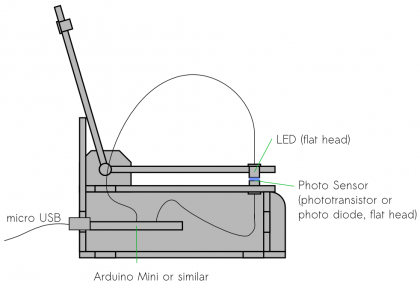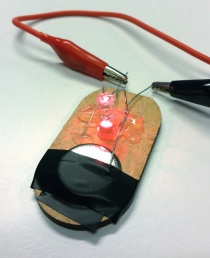DIY Microvolume Spectrophotometers
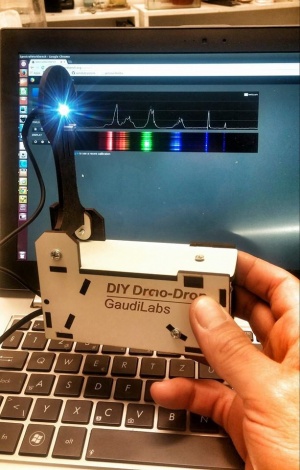
Attempt to build DIY Microvolume Spectrophotometers or Fluorospectrometers to quantitate micro-volumes of sample.
The Microvolume Spectrometer products are very popular in scientific labs. The measurement principle of holding a drop between two points - the light source and the sensor - allows to measure samples as small as 0.5µL up to 2µL micro volume without a cuvette. The simple basic principle should be perfect for DIY lab equipment. Let's try.
Possible applications:
- Turbidity measurement
- Spectral data and purity analysis
- Measure nucleic acid, protein and colorimetric assays
- Microvolume fluorescence measurements
To start simple, two approaches are tested, one based on the DVD spectrometer and a webcam and one using an LED and a photo sensor.
LED-Spectrometer
This version of a DIY microvolume spectrophotometersfor is based on a DIY spectrometer using a DVD-R optical diffraction
grating and a USB webcam as described by PublicLab. The light source is a white 5mm flat head LED. The device is sensitive in the visible light spectrum. The standard webcam can be connected to a computer by USB to get the image of the spectrum instantly. Use the PublicLabs excellent online software workbench to analyse data - http://spectralworkbench.org/ .
The device is very compact (110 mm x 45mm x 80 mm) and can be assembled and calibrated quite easily.
The length of the light guide formed by the test sample between the LED and the light guide can be adjusted by means of a simple screw. For the light guide just cut out a piece of 6mm acrylic with the laser cutter
The LED is connected to the USB supply voltage of the webcam.
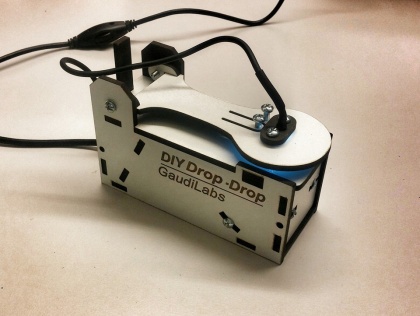
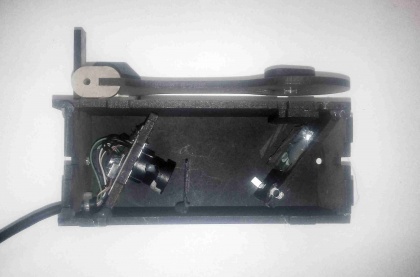
All the parts can be laser cut from 3mm wood. For best performance use MDF with water repellent coating on one side and backside sprayed black.
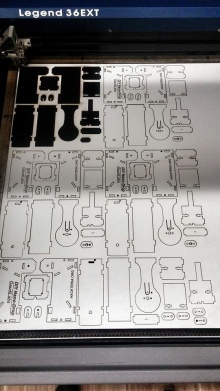
I used this cheap webcam for the hack:
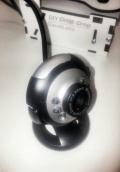
This are the most recent design files for laser cutting the housing:
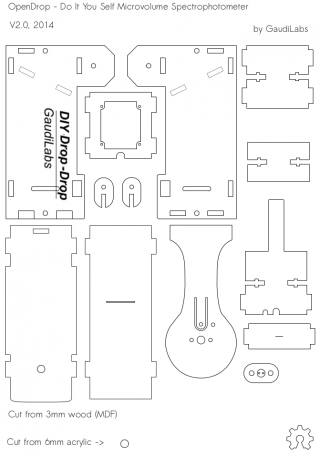
The files can be found on GitHub here:
http://www.gaudi.ch/GaudiLabs/?page_id=328
LED-Photosensor
A flat head LED and a flat head photo diode are put together, a drop of liquid in between - this is it. Maybe add a screw to set the distance between the light source and the sensor. A small arduino can measure the light sensor and send the data to the computer via USB.
Prototype of LED-Photosensor Version
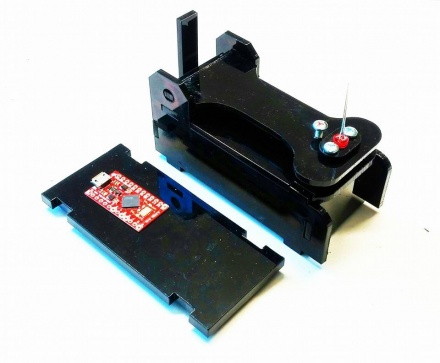
High performance LEDs can replace expensive light source and filters for excitation.
Workshops
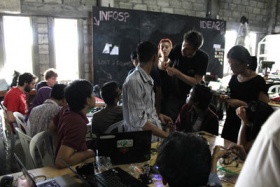
Workshop at HackteriaLab 2014, Yogyakarta, Indonesia
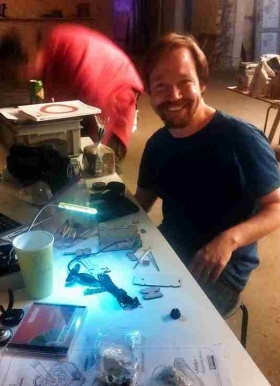
Workshop at Kopenlab Festival @ EuroScience Open Forum (ESOF2014)
Resources
The very first prototype:
Patent Situation:
Thermo Scientific claims a patent for a micro volume spectrometer principle (patent US6628382 and US6809826). However there are two earlier patents that seem to cover the claimed technology and those are expired by now (US4910402 /US4910402) (thanks for the hint on PublicLab research blog, Mathew) . This would also explain why there are many similar products on the market under the term of "Microvolume Spectrophotometers". Fair enough let's build our own.
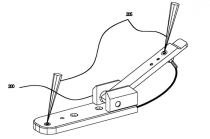
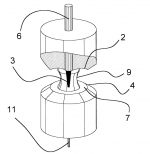
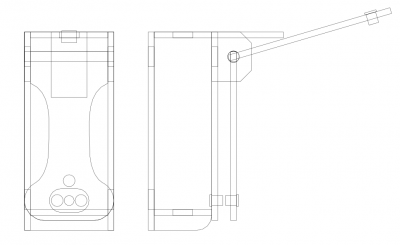
NanoDrop is a trademark of Thermo Fisher Scientific
Links
http://www.google.com/patents/US6628382
http://www.google.com/patents/US6809826
http://www.google.com/patents/US4910402
http://www.google.com/patents/US4643580
http://www.google.com/search?q=Microvolume+Spectrophotometers&source=lnms&tbm=isch
